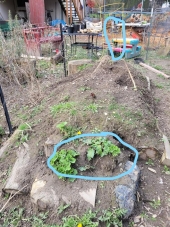My biogas generator is not working, even though it was only supposed to take nine days to ferment and it's been weeks. It won't light. I'm not getting any gas at all as far as I can tell. It didn't get too cold, either. The temperature inside my house has been 60-80 F the whole time.
I built this biogas generator based on this video I saw on Youtube:
https://youtu.be/CmtAWQVZtl4
It involves using a mixture of manure, plant waste, water, N-P-K fertilizer and rock salt to produce biogas much more efficiently than the mixture of manure/vegetable waste/water that many of us are familiar with.
According to the video, the small 8-gallon tank of waste is supposed to generate enough gas to keep a flame lit for eight hours a day for one month. Did anybody else try this/know about this method of creating biogas?







